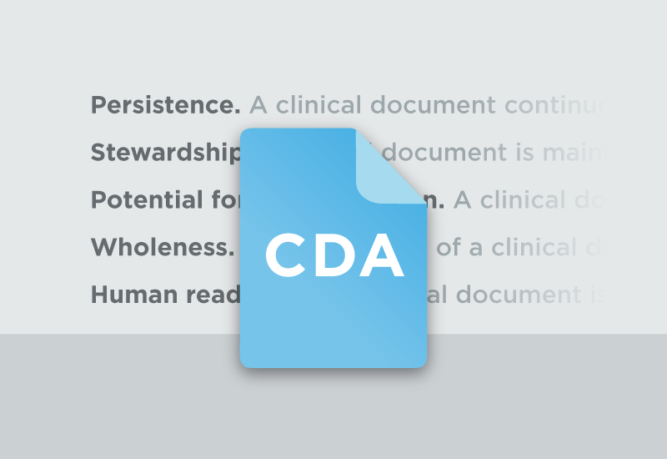
Clinical Document Architecture (CDA) is an XML-based standard for encoding clinical documents for easy data exchange.
CDA allows healthcare providers to create digital documents containing patient information that they might wish to send to other healthcare providers or regulatory authorities.
CDA documents contain any and all information about a patient’s medical history, such as allergies, medications, insurance information or lab results. Essentially, any piece of information that might be relevant to a healthcare provider or government entity.
Watch this video to learn more about Clinical Document Architecture.
Advantages of Clinical Document Architecture
- CDA is a flexible standard that can be read by both humans and processed by a machine.
- Makes it possible to display a patient’s entire medical history in one document.
- Can be reused in multiple applications.
- Aims to eliminate message variability that HL7 V2 is prone to.
Challenges of Clinical Document Architecture
- Compatibility: CDA is not backwards compatible with HL7 V2.
- Large file size: CCD’s (see below) can easily reach hundreds of millions of lines of XML with file sizes up to 400MB.
- Validation: Different customers will have different validation methods, which often won’t match the publicly available ones.
- Data completion: Having an incomplete set of data can make it difficult to create valid documents.
Clinical Document Architecture Examples and Use Cases
- Here is what an example of a Clinical Document Architecture XML document looks like.
- Typical CDA documents include: imaging reports, continuity of care documents, procedural notes, and more.
- CDA is used across all types of healthcare organizations, including: doctor’s offices, hospitals, immunization clinics, and regulatory authorities.
- The largest producer of CDA documents is the Mayo Clinic who expects to produce 50,000 notes per week in the near future. Other organizations that are utilizing CDA include the Duke Clinical Research Institute in North Carolina and Columbia-Presbyterian in New York.
Continuity of Care Documents (CCD): The CDA Workhorse
CDA is the basis for the most commonly used record: the Continuity of Care Document (CCD).
Continuity of Care Documents provide any pertinent information that a physician might need to treat a patient, but it isn’t necessarily an entire medical history. A CCD contains a summary of any pertinent information that a doctor or specialist might need to know.
For example, let’s say you have a bad ear infection and your family doctor sends you to a specialist. The specialist will need to know information about allergies, medications and past doctor’s appointments, in order to provide the best possible care for you.
Iguana and Clinical Document Architecture
Here at iNTERFACEWARE we offer a free add-on Clinical Document Architecture (CDA) API for our Iguana integration engine.
The add-on extends Iguana’s core XML functionality for working with XML and comes with pre-built code for generating all sections of a Continuity of Care Document (CCD).
This allows users to customize the document structure or code sets. When developing the add-on, our aim was to greatly cut down on implementation time by using a simplified approach.

